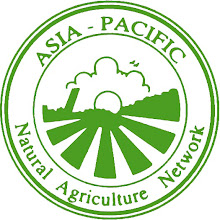EM FPE is made from fresh weeds and plants with EM. Therefore, EMFPE contains organic acids, bioactive substances, minerals and other useful organic compounds which are produced or extracted from plants through fermentation process.
EM FPE is mainly used as a plant activator. In the case one puts the weeds, which have strong smell and substance, such as neem leaf to prevent the disease and insects. One expects FPE as organic pesticides.
Material For 20L
Fresh weeds(chopped) 14 liters(2-3kg)
Clean water 14 liters
Molasses 420ml(3% of water volume)
EM・1 420ml(3% of water volume)
Plastic drum or bucket 20L
Process of preparation
1. Chop freshly harvested weeds into small (2-5cm) pieces and place in container.
2. Mix EM and molasses in water and add to weeds in container.
3. Cover container with black polythene or vinyl.
4. Place lid of container on top of the block cover and place some weights on it.
Avoid having space between the liquid and cover (i.e. container must be full).
5. Store the container in a warm place. (Ideally 20℃ to 35℃), away from direct sunlight.
6. Fermentation is initiated and gas is generated within 2-5 days. This depends on the ambient temperatures.
7. Stir the liquid in container regularly to release gases.
8. EM FPE is ready to use, 7-14 days after preparing it. When the pH of the solution drops below 4.0(ideally it has a pH around 3.5) and when it has a sweet –sour smell.
Pour the prepared EM FPE into plastic bottles after removing weeds by filteration.





















.JPG)


















